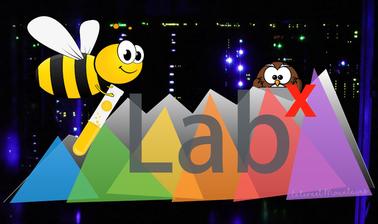MOOC List is learner-supported. When you buy through links on our site, we may earn an affiliate commission.

MOOC List is learner-supported. When you buy through links on our site, we may earn an affiliate commission.
The Internet is the world's biggest computer network. It connects everything, from people to machines, in all areas, from the art world to the stock exchange, everywhere on this planet and beyond. It has become one of our most important infrastructures. But how does this Internet that enables so many things in our daily lives actually work? After taking part in iLabX, you will not only understand the mechanisms behind modern computer networks, but you will create the Internet yourself on your own computer!
iLabX uses an award-winning methodology to teach you how the Internet works. Starting with the physical cables, you will learn, in six parts:
- what exactly happens when you open a website in your browser or send a chat message to a friend,
- how to set up a webserver yourself,
- how the ongoing transition between the “old” Internet version and its current successor can be so seamless, and
- key security concepts.
Each module first introduces the background of the relevant mechanisms and tools. After learning the concepts through videos, texts, and diverse interactive learning elements, you will build your own fully-functional Internet. Within our special vLab virtual Internet laboratory, you will use the same tools that also power the big Internet. Under our close guidance, each module brings you closer to having a fully-functional Internet running on your computer. As we use the real Internet mechanisms, we will even connect your creation to the real Internet at the end. Consequently, you can call yourself a true Internet master after completing this course!
When designing this course, we focused on making it exciting and continuously motivating for you. No matter what kind of learner you are, you will find the right learning experience! Our videos explain everything in detail. If you prefer reading instead, go ahead. You can read the texts instead of or in addition to the videos. We have many practical exercises and of course the virtual laboratory that allows you to configure the real Internet on your computer! Last but not least, we have an engaging story that continues through all parts: Help the iLabees scale their honey sales up, taking their business to the summit of the Internet mountains!
What you'll learn
- A full understanding of how the Internet works in its current versions IPv6 and IPv4
- Basic knowledge about Computer Networking Architectures, illustrated with the Internet layer model
- Applied understanding of common Internet Protocols
- Applied understanding of common Internet Applications including DNS, NAT, and firewalls
- Applied understanding of Internet security challenges and mitigation mechanisms
Detailed Keywords for the six Parts of this Computer Networking Course
Part 1 - Signals and Cables: Signals, shared medium, physical medium, noise, addressing, topologies, unicast, broadcast, headers, payload, trailer, twisted pair, optical fiber, wireless, non-return to zero (NRZ), Manchester encoding, self-clocking.
Part 2 - Internet Protocol: Internet Protocol (IP), IPv6, IPv4, subnetting, fragmentation, Stateless Address Auto Configuration (SLAAC), Neighbour Discovery Protocol (NDP), Internet Control Message Protocol (ICMP), static routing, forwarding, multicast.
Part 3 - Routing: Dynamic routing, longest prefix matching, Autonomous System (AS), Open Shortest Path First (OSPF), Routing Information Protocol (RIP), Dijkstra, Bellmann-Ford, paths, loops.
Part 4 - Transmission Control Protocol and User Datagram Protocol: Transmission Control Protocol (TCP), User Datagram Protocol (UDP), reliable communication, stateful communication, 3-way handshake, aknowledgements (ACK), piggyback, retransmission, congestion control, flow control.
Part 5 - Domain Name System and Webservers: Domain Name System (DNS), resolver, nameserver, zones, sub-domains, iterative vs. recursive name resolution, A and AAAA records, Hyper Text Transfer Protocol (HTTP), Transport Layer Security (TLS), HTTPS, virtual hosts.
Part 6 - DNS64/ NAT64 and Firewalls: Network Address Translation (NAT), DNS64, NAT64, state, address rewriting, IP 5-tuple, chains, filter, blacklisting, whitelisting, rules, firewall, tables.
Prerequisites
- Curiosity and motivation are required
- Basic knowledge of computer science is beneficial
- Knowing how to work on the command line helps but you will also learn it in the course
- Background in computer networks is not required but will make you progress faster
MOOC List is learner-supported. When you buy through links on our site, we may earn an affiliate commission.
MOOC List is learner-supported. When you buy through links on our site, we may earn an affiliate commission.
